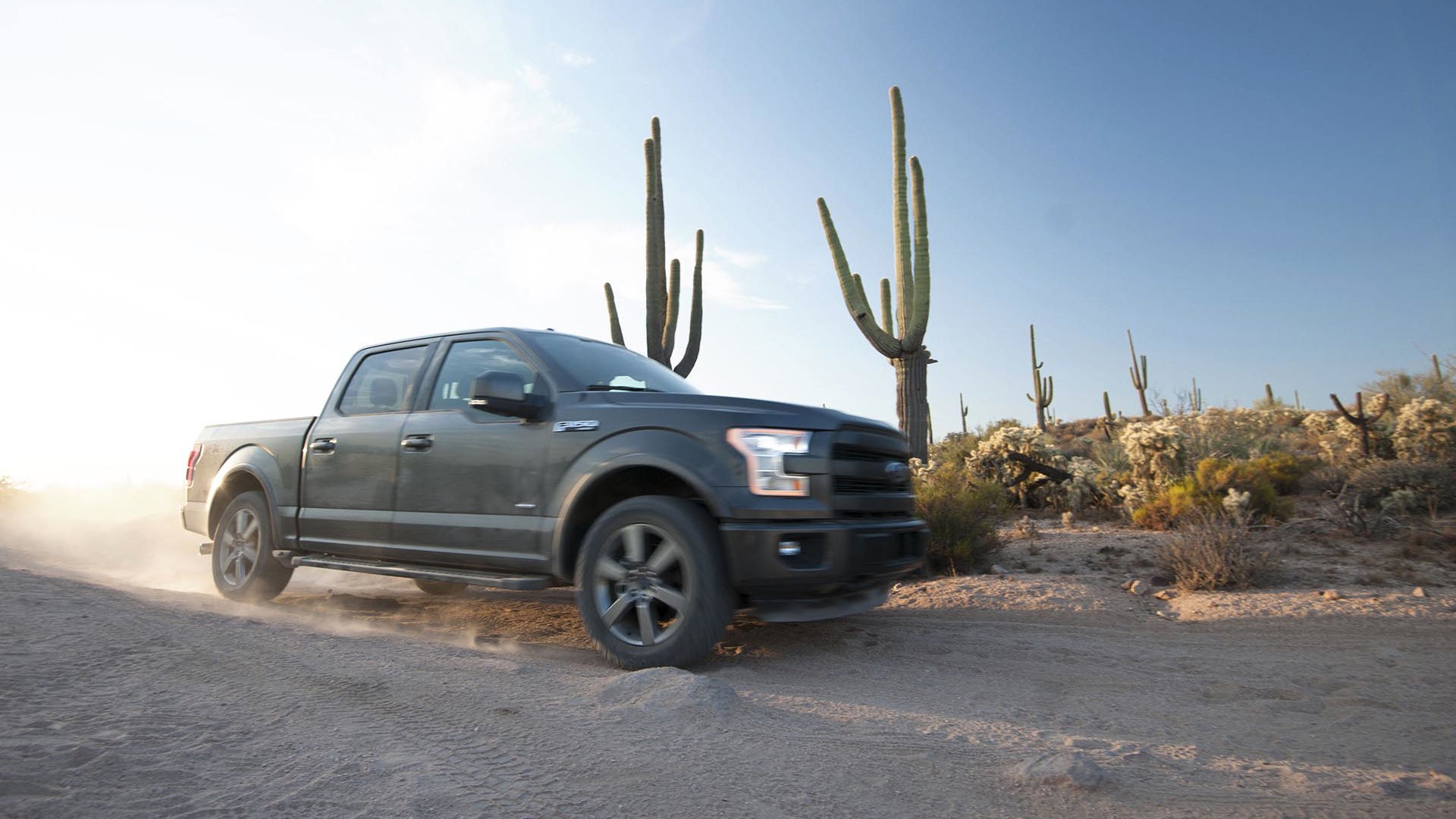Eco Trucks: they’re a thing now; a big one. The Big Three all include the word ECO in various variants which promise excellent fuel efficiency and manliness and performance and toughness for a big-boy truck experience with minimal stops to refuel.
Whether you’re cruising the highway, hitting an off-road trail, hauling the fam-jam off to the slopes or towing a big-ass trailer, these trucks aim to go further with less expense and emissions. Below is a highlight of the Eco Trucks from the Big Three, the technologies at play in each one, and a look at how they work in real life.
We’ll also look at real-life fuel economy data, thanks to the experts at the Canadian Truck King Challenge. Yearly testing sees the CTKC conduct extensive test-drives on trucks and utility vehicles, and report on real-life fuel efficiency of all test vehicles. Special data-collection devices are hooked up to all participating models, and used to accurately measure the real-life fuel consumption of participating trucks in a variety of conditions. These include hauling payload, hauling a trailer, and unloaded / empty driving.
Here’s a closer look.
Truck: Ford F-150 EcoBoost

Eco Engines:
Today, two available EcoBoost V6 engines can be had in F-150. Namely, a 3.5L unit, and a new, smaller, 2.7L unit are on offer. Ford’s EcoBoost engines are an extra-cost option for shoppers, and blend twin-turbocharging and direct injection for a promise of big-engine punch and small-engine fuel efficiency.
Other Eco Features:
The latest F-150 uses aluminum extensively in its body construction to reduce weight by several hundred pounds. Select engines are also fitted with Auto Stop, to virtually eliminate idling.
Eco in Action:
Ford’s two current EcoBoost engine options are designed to generate tremendous low-end torque, available from lower revs than a conventional gasoline V8, while using less fuel, more of the time. The gist? EcoBoost seeks to keep owners from paying extra for capability they don’t need, and from paying for the big torque output when they’re not using it.
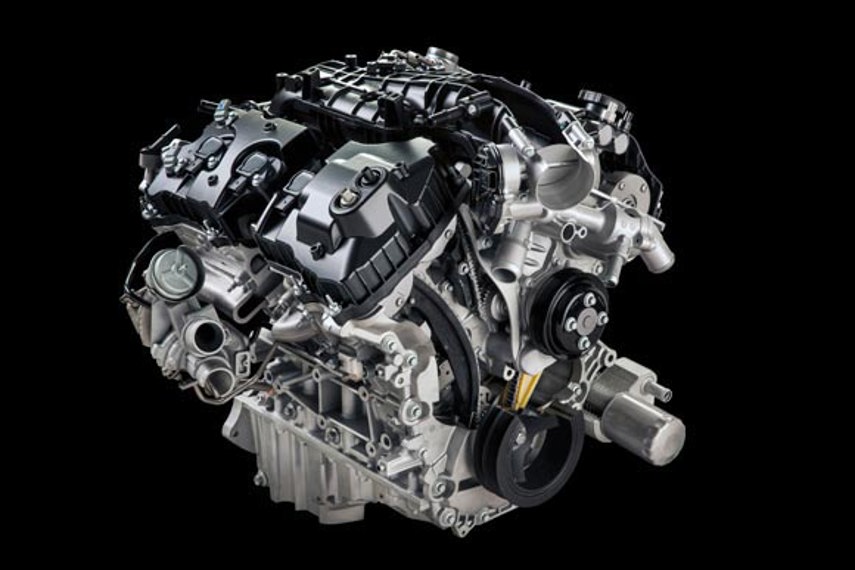
Test Drive Notes:
On a test-drive of a last-generation F-150 with the 3.5L EcoBoost engine, your writer hauled a sailboat up often-hilly terrain without even requiring a downshift at most times. This engine is refined and smooth, even when worked hard. It lacks an exhaust note, but the low-end torque is huge, even matching the RAM 1500 EcoDiesel engine for torque output. Overall mileage on my test landed under 14 L/100 km – impressive given the output and capability.
A recent test-drive of a current-generation, aluminum-intensive model with the 2.7L engine also impressed. Mileage figures were similar though not comparable, as the next-generation F-150 tester wore more aggressive tires and was tested in the dead of winter. The un-loaded performance between the two EcoBoost engines is virtually identical everywhere, other than at full throttle.
Canadian Truck King Challenge Fuel Economy Notes:
Data collected under the Truck King Challenge saw the tested 2013 F-150 EcoBoost with 3.5L engine and steel body, turn in 12.2 L/100 km during unloaded driving as a baseline. That figure climbs slightly to 12.9 L/10 km with payload added, and attaching the trailer saw consumption climb to 19.7 L/100 km—representing the largest fuel consumption penalty (7.5 L/100 km) between unloaded and trailer-towing of the trio.
Truck: GM Pickups (Silverado/Sierra)
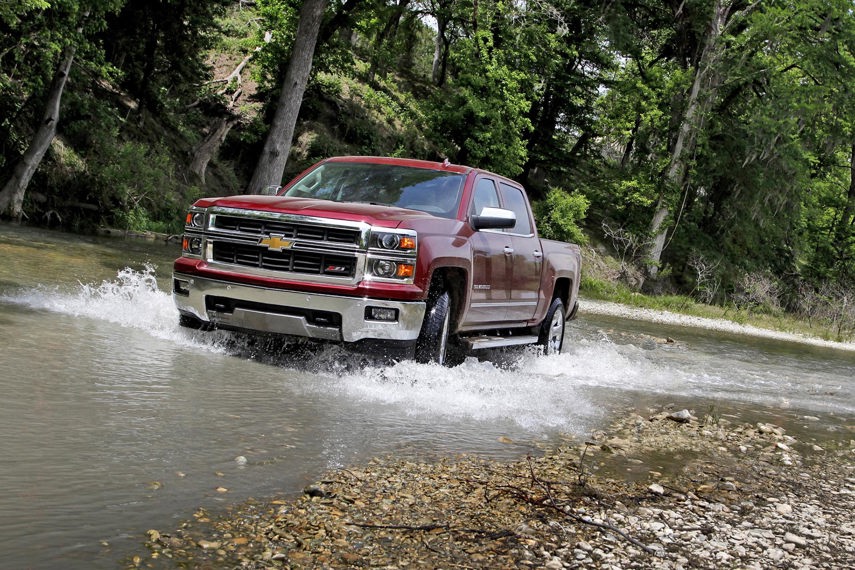
Eco Engines:
GM’s latest pickups run new EcoTec3 technology, which is a high-efficiency take on a conventional gasoline engine. Unlike the other trucks in our highlight, the GM pickups offer EcoTec3 technology free of charge as standard equipment.
Other Eco Features:
Cylinder deactivation is employed to help reduce fuel consumption in certain driving situations where full engine power isn’t required. Newer models will get an eight-speed automatic to help trim at consumption and improve performance.
Eco in Action:
Supercomputer designed pistons, a specially-tuned exhaust manifold, advanced variable valve timing hardware and direct fuel injection all contribute to exceptional fuel efficiency through a fully optimized combustion process which seeks to extract maximum energy from every molecule of fuel burned. A 4.3L V6 is available, as is a 5.3 or 6.2L V8. All engines run the same set of features, technologies and design implements designed to keep costs down while maximizing fuel efficiency.
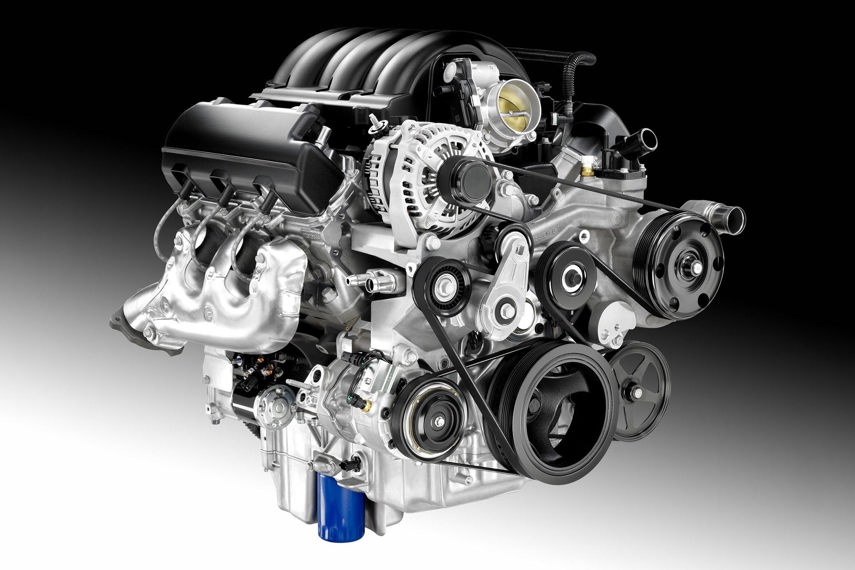
Test Drive Notes:
On my test of a 2014 Silverado LT 4x4 with the 5.3L engine, I recorded overall test mileage on par with a smaller, less powerful truck, virtually tying the Honda Ridgeline and Toyota Tacoma for overall, measured-by-hand mileage on my usual test-drive route. This is arguably the most refined powertrain in the segment, too.
Canadian Truck King Challenge Fuel Economy Notes:
Unloaded driving in the Canadian Truck King Challenge saw 13.1 L/100 km as the unloaded consumption figure, which rises slightly to 13.2 L/100 km with payload added. The trailer-hauling exercise saw consumption land at 19.8 L/100 km. These numbers virtually tie the F-150 EcoBoost. Though the Silverado will feel like it’s working harder from the driver seat while towing, and though the F-150 makes more torque at lower revs, what shoppers ultimately have here have is two ways to achieve similar mileage: with a no-cost V8, or an added-cost V6 with a notable torque advantage.
Interestingly, GM’s 5.3L EcoTec3 engine demonstrates the lowest jump in fuel consumption of the trio when it’s working hard. The payload test only resulted in a 0.1 L/100 km penalty, and the trailer-towing test only saw fuel consumption jump by 6.7 L/100 km.
Truck: RAM 1500 EcoDiesel

Eco Engine:
RAM 1500’s available EcoDiesel powerplant is a pricey option at some $4,500 – though the 3.0L turbodiesel V6 turns in fuel consumption figures that some owners will find more than worth the added cost.
Other Eco Features:
Ram EcoDiesel also has an eight-speed automatic and air-adaptive suspension on offer, helping to trim away at fuel consumption through lowered highway cruising revs and improved aerodynamics.
Eco in Action:
Diesel makes big heaps of torque from small amounts of fuel. With diesel power, drivers get huge torque output, good mileage and minimal compromise. Abundant torque provides a more effortless feel when the engine is worked hard. Many drivers of diesel engines report that with big torque at low revs, the engine barely ‘feels’ an attached trailer or heavy payload.
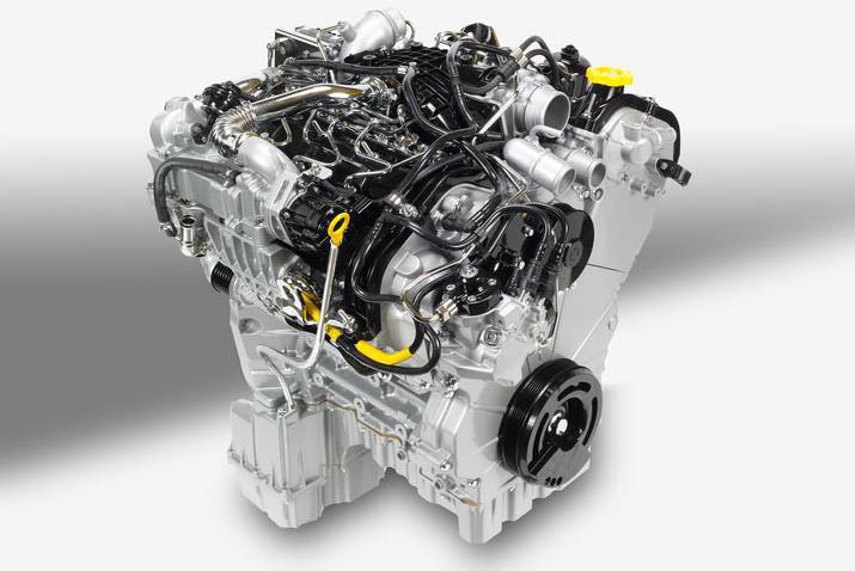
Test Drive Notes:
Smooth, refined and allowing a just-right amount of diesel engine sound effects into the cabin, the EcoDiesel engine in the RAM 1500 achieved better mileage than even the six-cylinder gas-powered RAM 1500 4x4 in your writer’s testing. The diesel engine is as smooth and refined as any, and remarkably easygoing and responsive being driven very gently. Other than a hint of diesel sound effects and a slight delay between key-turn and engine ignition, you’d hardly notice this engine’s fuel choice.
Canadian Truck King Challenge Fuel Economy Notes:
Truck King fuel economy testing saw the Ram EcoDiesel achieve better than a 3.0 L/100 km advantage in unloaded economy over the F-150, which ties it for torque output. The extra-cost EcoDiesel engine bested the GM EcoTec3 V8 by some 4 L/100 km in unloaded fuel economy. Advantages extended to payload mileage tests, where the EcoDiesel boasted a (curiously large) jump of nearly 1.5 L/100 km with payload added, but still came in using significantly less fuel than its competitors.
In Canadian Truck King Challenge testing, the EcoDiesel engine used 7 L/100 km more fuel when trailer towing – putting the trailer towing mileage penalty mid-pack. The 16.1 L/100 km trailer hauling figure represents a savings of over 3 L/100 km compared to the F-150 or Silverado.
Saving 3 L/100 km in most driving conditions, and assuming gasoline to cost about $1.15 per litre and averaging the same price as diesel over the course of a year, one might expect the break-even point on investment in the $4,500 EcoDiesel engine to be about 130,000 kilometers.
